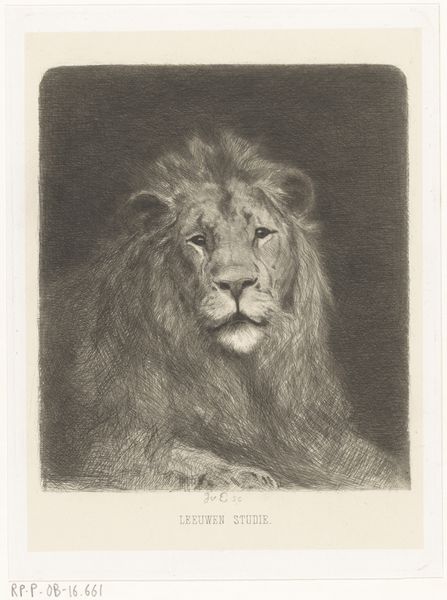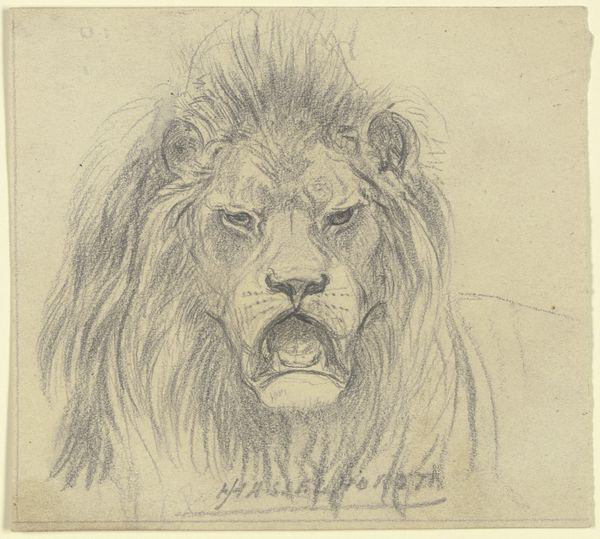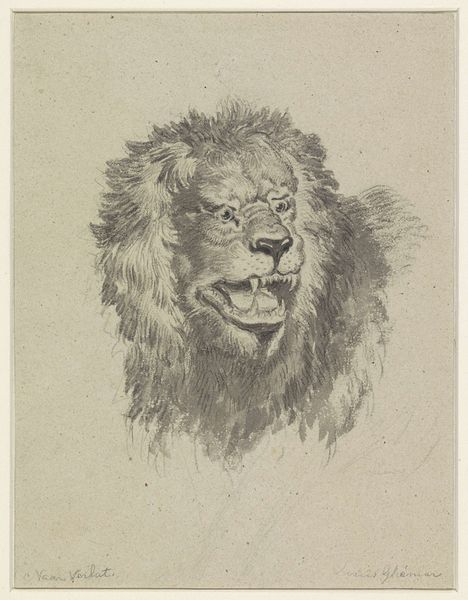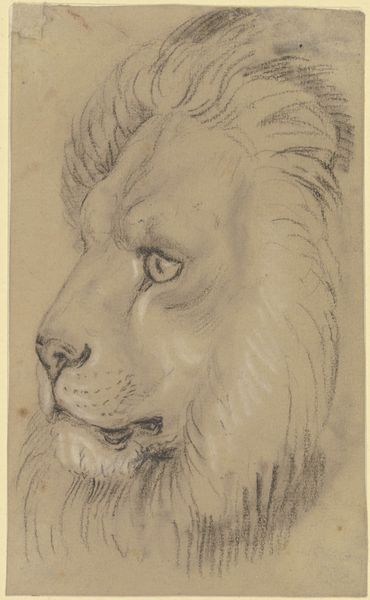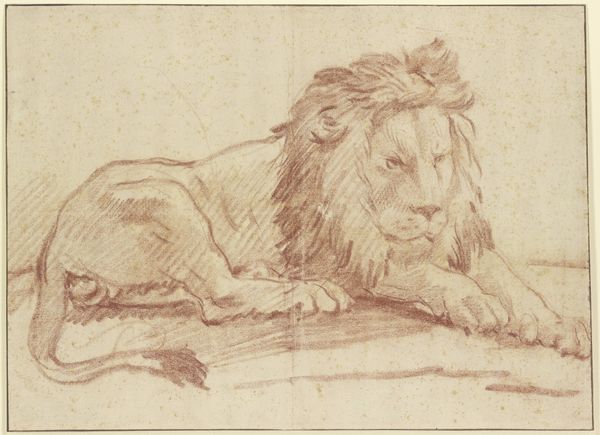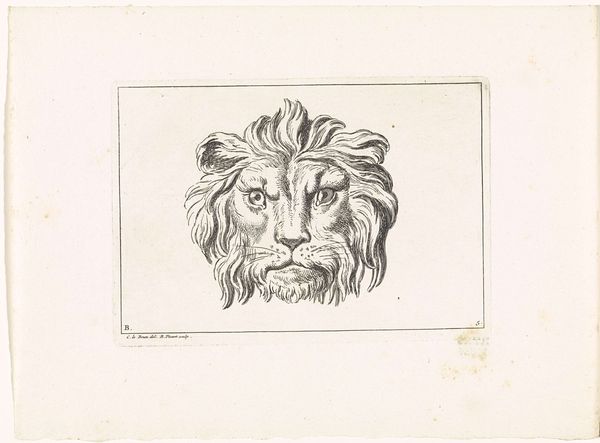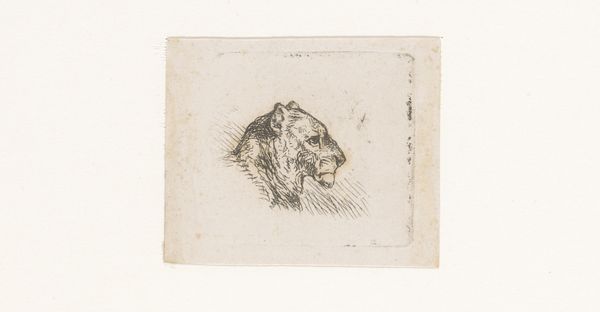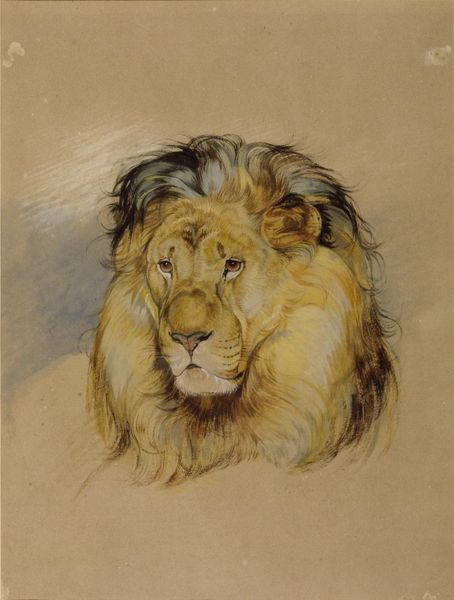
drawing, pencil, graphite
#
portrait
#
pencil drawn
#
drawing
#
pencil sketch
#
figuration
#
pencil drawing
#
pencil
#
line
#
graphite
#
realism
Dimensions: height 230 mm, width 177 mm
Copyright: Rijks Museum: Open Domain
Editor: This graphite drawing from between 1864 and 1909, titled "Head of a Lion" and attributed to Jan van Essen, is striking. The lion’s gaze is so direct, almost melancholic. What strikes you when you look at this drawing? Curator: Well, first, the lion itself. Across cultures, the lion symbolizes courage, royalty, and strength. But the way van Essen renders it—with those soft graphite lines and the almost sorrowful expression—it complicates that symbolism. Do you see a vulnerability there, perhaps? Editor: I do. The shadow surrounding its face adds to that feeling. It's not just a powerful beast, but something more pensive. Curator: Exactly. And consider how often the lion appears in heraldry, religious iconography, even children’s stories. Van Essen seems to be inviting us to reconsider that inherited imagery. To peel back the layers of cultural meaning. What does the 'king of beasts' represent when depicted with such… humanity? Editor: It's as if he's taken a symbol of unwavering power and revealed its capacity for contemplation, maybe even suffering. A fascinating inversion. Curator: Indeed. This drawing, then, isn't just a portrait of a lion; it’s an exploration of the lion as a symbol, and how our understanding of those symbols evolves. It certainly gives one pause. Editor: I never thought a simple drawing of a lion could hold so many layers. Thanks for opening my eyes!
Comments
No comments
Be the first to comment and join the conversation on the ultimate creative platform.
